Research themes
Key research themes
We use a combination of field and laboratory-based experiments and meta-analyses to test hypotheses about jellyfish ecology. Discover the major research themes our laboratory focuses on.
Testing links between anthropogenic stressors and jellyfish blooms
Some jellyfish species seem to thrive in highly perturbed environments and this has fuelled claims that anthropogenic stressors cause jellyfish blooms. We use rigorous experiments to test hypotheses about how jellyfish respond to a variety of anthropogenic stressors including ocean warming and acidification, hypoxia, UV radiation and chemical and plastic pollutants. Our experiments are carefully designed to ensure their environmental relevance. For example, experiments on hypoxia and acidification incorporate diel cycling in pCO2 and pO2; we test the potential interactive effects of multiple stressors; and we use environmentally relevant concentrations of pollutants. Moreover, we aim to work on a variety of jellyfish species, including problematic and non-problematic taxa, to determine the generality of responses of jellyfish to anthropogenic stressors.
Key papers
- Treible LM, Pitt KA, Klein SG, Condon RH. (2018) Exposure to elevated pCO2 does not exacerbate reproductive suppression of Aurelia aurita jellyfish in low oxygen environments. Marine Ecology Progress Series 591:129-139.
- Klein SG, Pitt KA, Nitschke M, Goyen S, Welsh D, Suggett D, Carroll A (2017). Symbiodinium mitigate the combined effects of hypoxia and acidification on a non-calcifying cnidarian. Global Change Biology 23: 3690-3703.
- Klein SG, Pitt KA, Carroll AR (2016). Surviving but not thriving: inconsistent responses of zooxanthellate jellyfish polyps to ocean warming and future UV-B scenarios. Scientific Reports 6, 28859; doi: 10.138/srep28859.
- Klein SG, Pitt KA, Carroll AR (2016). Reduced salinity increases susceptibility of zooxanthellate jellyfish to herbicide toxicity during a simulated heavy rainfall event. Environmental Pollution. 209:79-86.
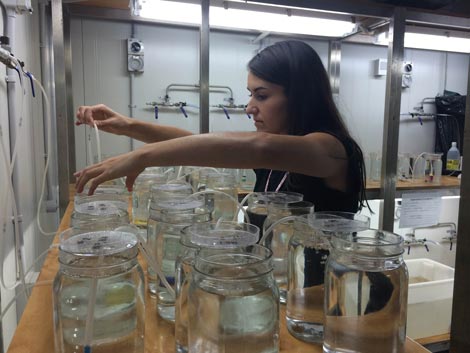
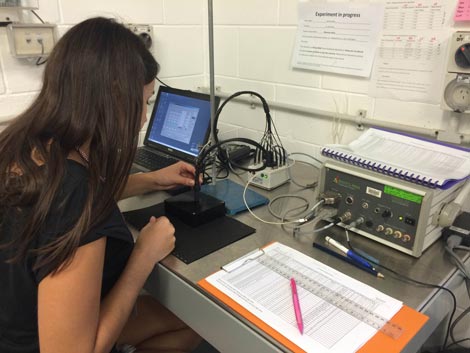
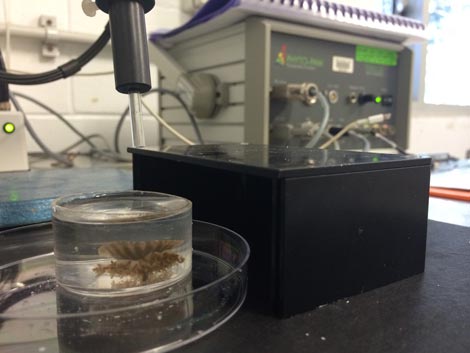
The role of jellyfish in supporting biodiversity in the ocean
A great diversity of organisms associate with jellyfish including microalgae (zooxanthellae), trematodes, anemones, crabs, ophiuroids, barnacles and fish. Relationships between jellyfish and their associates include parasitism, commensalism and symbiosis, sensu stricto. We use a combination of field observations, molecular (e.g. genetic) and chemical tracer approaches (e.g. stable isotopes) and laboratory-based experiments to study the relationships between jellyfish and their symbionts. By acting as hosts for a diverse array of associates, jellyfish probably have a major role in supporting biodiversity in the ocean.
Key papers
- Browne JG, Pitt KA, Norman MD (2017). The temporal association of the jellyfish, Catostylus mosaicus, with a saphaeromatid isopod and parasitic anemone. Marine and Freshwater Research 68:1771-1777.
- Ingram B, Pitt KA, Barnes P. (2017). Stable isotopes reveal a potential kleptoparasitic relationship between an ophiuroid (Ophiocnemis marmorata) and the semaeostome jellyfish, Aurelia aurita. Journal of Plankton Research 39:138-146.
- Nagelkerken I, Pitt KA, Rutte M, Geertsma R (2016). Ocean acidification alters fish–jellyfish symbiosis. Proceedings of the Royal Society Series B Impact Factor 4.82. DOI: 10.1098/rspb.2016.1146
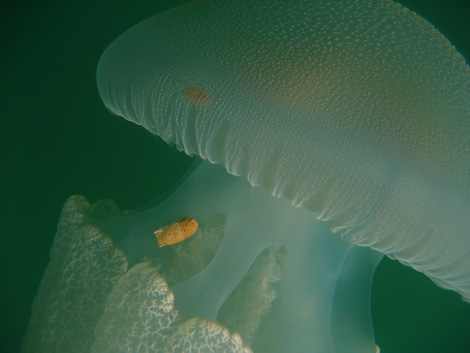
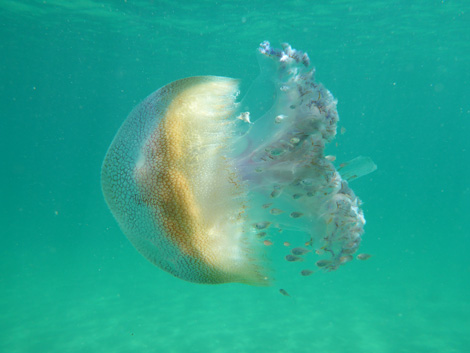
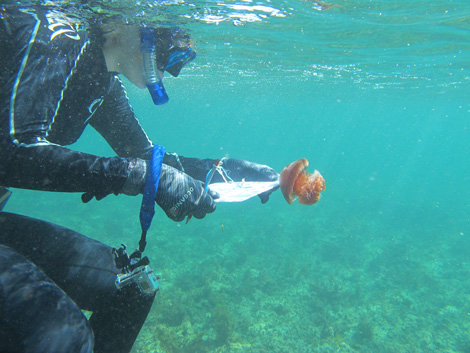
Jellyfish are voracious predators and can influence the composition and abundance of the zooplankton communities on which they prey. We use a variety of approaches to study trophic relationships of jellyfish, including experimental mesocosms in the field and chemical tracer approaches such as stable isotopes and fatty acids.
Key papers
- West EJ, Pitt KA, Welsh DT, Koop K, Rissik D. (2009) Top-down and bottom-up influences of jellyfish on primary production and planktonic assemblages. Limnology and Oceanography 54(6): 2058-2071.
- Pitt KA, Connolly RM, Meziane T (2009). Stable isotope and fatty acid tracers in energy and nutrient studies of jellyfish: a review. Hydrobiologia 616:119-132. Impact Factor: 1.99
- Mortillaro JM, Pitt KA, Lee SY, Meziane T (2009). Light intensity influences the production and translocation of fatty acids by zooxanthellae in the jellyfish Cassiopea sp. Journal of Experimental Marine Biology and Ecology 378: 22-30. Impact Factor 2.26
- Pitt KA, Clement A-L, Connolly RM, Botha, D (2008) Stable carbon isotopes emphasise the importance of large and emergent zooplankton to the diet of jellyfish. Estuarine, Coastal and Shelf Science 76:827-833. Impact Factor 2.32
- Peach MB and Pitt KA. (2005) Morphology of nematocysts of medusae of Catostylus mosaicus and Phyllorhiza punctata (Rhizostomeae, Scyphozoa, Cnidaria) and implications for capture of prey. Invertebrate Biology 124(2):98-108. Impact Factor: 1.11
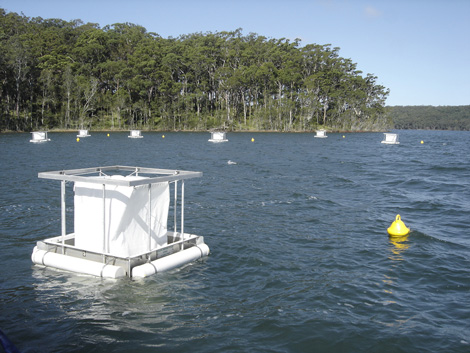
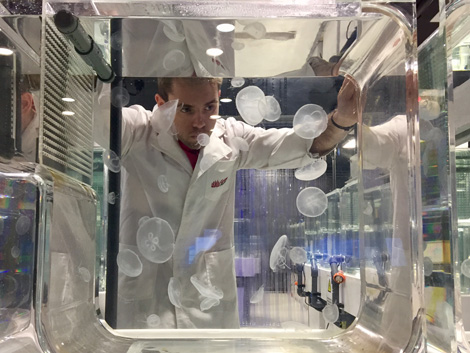
Global trends in jellyfish populations
Claims that jellyfish populations are rising globally pervade the scientific and popular literature and media. We use meta-analyses of existing data sets to test hypotheses about global changes in jellyfish populations. We have discovered that across the world jellyfish populations oscillate in 22-year cycles and are probably not increasing globally. We are now investigating the factors that could be driving the jellyfish cycle.
Key papers
- Sanz-Martin M, Pitt KA, Condon RH, Lucas CH, Novaes de Santana C, Duarte CM (2016). Flawed citation practices lends credence to the perception of a global trend towards increased jellyfish blooms. Global Ecology and Biogeography 25:1039-1049.
- Lucas CH, Jones D, Hollyhead CJ, Condon RH, Duarte CM, Graham WM, Robinson KL, Pitt KA, Shildhauer M, Regetz J (2014) Gelatinous zooplankton biomass in the global oceans: geographic variation and environmental drivers. Global Ecology and Biogeography 23:701-714.
- Duarte CM, Pitt KA, Lucas C, Purcell J, Uye S, Robinson K, Brotz L, Decker M, Sutherland KR, Malej A, Madin L, Mianzan H, Gili JM, Fuentes V, Atienza D, Pages F, Breitburg D, Malek JC, Graham WM, Condon R. (2013) Is global ocean sprawl a cause of jellyfish blooms? Frontiers in Ecology and the Environment 11:91-97. doi:10.1890/110246.
- Condon RH, Duarte CM, Pitt KA, Robinson K, Lucas CH, Sutherland KR, Mianzan HW, Bogeberg M, Purcell JE, Decker MB, Uye S, Madin LP, Brodeur RD, Haddock SHD, Malej A, Parry GD, Eriksen E, Quiñones J, Acha M, Harvey, M, Graham WM (2013). Recurrent jellyfish blooms are a consequence of global oscillations. Proceedings of the National Academy of Sciences 110:1000-1005.
- Condon RH, Graham WM, Duarte CM, Pitt KA, Lucas CH, Haddock SHD, Sutherland KR, Robinson KL, Dawson MN, Decker MB, Mills CE, Purcell JE, Malej A, Mianzan H, Uye SI, Gelcich S, Madin LP (2012). Questioning the rise of jellyfish in the world’s oceans. Bioscience 62:160-169.
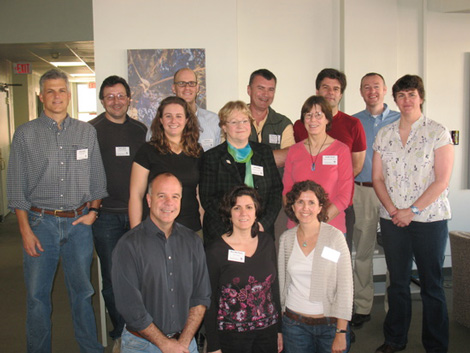

Irukandji jellyfish are common in Australia’s tropical waters. Envenomation by Irukandji jellyfish invokes a debilitating suite of symptoms referred to as ‘Irukandji syndrome’ and people stung by Iruakndji are often hospitalised. Irukandji jellyfish, therefore, are a major concern for the marine tourism industry.
Climate change is causing many marine species to shift their distribution polewards. The concern is that Irukandji jellyfish may extend their range into sub-tropical waters and impact the lucrative beach tourism industries of southeast Queensland. Evidence to support or refute this hypothesis, however, is very limited and we cannot yet predict how Irukandji jellyfish will respond to climate change. We use laboratory-based experiments to test the responses of Irukandji jellyfish to climate stressors, including warming and ocean acidification. This research will inform us about whether Irukandji jellyfish are likely to occur in southern Queensland waters in the near future
Key papers
- Kingsford MJ, Becken S, Bordehore C, Fuentes V, Pitt KA, Yanagihara A. (2018). Empowering stakeholders to manage envenoming jellyfishes. Coastal Management. 46:1-18.
- Klein SG, Pitt KA, Carroll A. (2017) Pre-exposure to simultaneous, but not individual, climate stressors limits acclimation capacity of Irukandji jellyfish polyps to predicted climate scenarios Coral Reefs. 36:987-1000.
- Klein SG, Pitt KA, Rathjen K, Seymour JE. (2014) Irukandji jellyfish polyps exhibit tolerance to interacting climate change stressors. Global Change Biology 20:28-37.
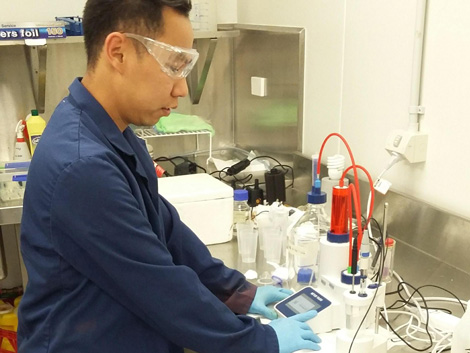
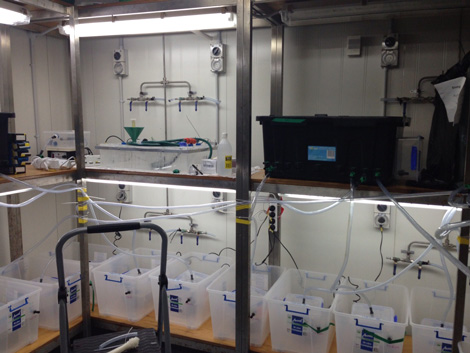
Role of jellyfish in nutrient cycling
Jellyfish populations exhibit ‘boom and bust’ population dynamics that are characterised by a rapid increase in biomass followed by mass decomposition of jellyfish carcasses when blooms collapse. Such rapid changes in jellyfish populations will greatly influence carbon, nitrogen and phosphorus cycling in the ecosystems they inhabit. We use laboratory and field-based experiments to understand how jellyfish influence nutrient cycling. Our research focuses on how decomposing jellyfish populations influence benthic biogeochemistry and the role of zooxanthellae in modifying nutrient dynamics in jellyfish.
Key papers
- Chelsky A, Pitt KA, Ferguson AJP, Bennett WW, Teasdale PR, Welsh DT (2016). In situ decomposition of jellyfish carrion: Short-term impacts on infauna, benthic fluxes and sediment redox conditions. Science of the Total Environment 566-567:929-937.
- Sweetman AK, Chelsky A, Pitt KA, Andrade H, van Oevelen D, Renaud PE (2016). Jellyfish decomposition at the seafloor can rapidly alter biogeochemical cycling and substantially modify carbon flow through benthic food-webs. Limnology and Oceanography. 61:1449-1461.
- Chelsky A, Pitt KA, Welsh DT. (2015). Biogeochemical implications of decomposing jellyfish blooms in a changing climate. Estuarine, Coastal and Shelf Science. 154:77-83.
- Lucas CH, Pitt KA, Purcell JE, Lebrato M, Condon RH. (2011) What’s in a jellyfish? Proximate and elemental composition and biometric relationships for use in biogeochemical studies. Ecology 92(8):1704.
- Lebrato M, Pahlow M, Oschlies A, Pitt KA, Jones DOB, Molinero JC, Condon RH. (2011) Depth attenuation of organic matter export associated with jelly-falls. Limnology and Oceanography 56(5):1917-1928.
- West EJ, Welsh DT, Pitt KA (2009). Influence of decomposing jellyfish on the sediment oxygen demand and nutrient dynamics: A mesocosm simulation. Hydrobiologia 616:151-160.
- Pitt KA, Kingsford MJ, Rissik D, Koop K (2007). Jellyfish modify the response of planktonic assemblages to nutrient pulses. Marine Ecology Progress Series 351:1-13.
- Pitt KA, Koop K, Rissik D. (2005) Contrasting contributions to inorganic nutrient recycling by the co-occurring jellyfishes, Catostylus mosaicus and Phyllorhiza punctata (Scyphozoa, Rhizostomeae). Journal of Experimental Marine Biology and Ecology. 315:71-86. Impact Factor: 2.26
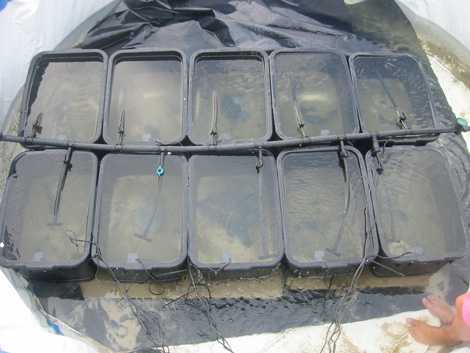
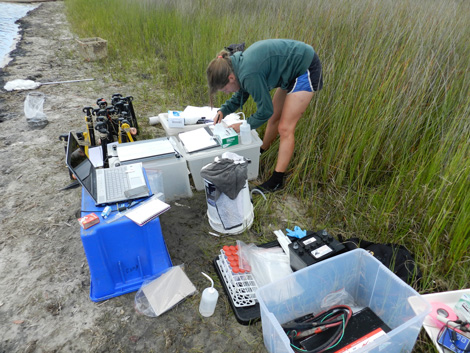
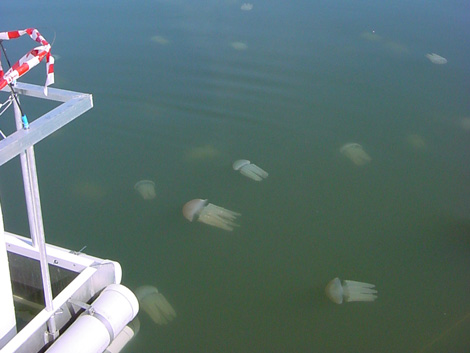
Are you interested in collaborating or joining our research team?
The Griffith Sea Jellies Research Lab is always keen to pursue new collaborations. If you are interested in collaborating or undertaking your PhD or honours research with us then please contact Associate Professor Kylie Pitt.